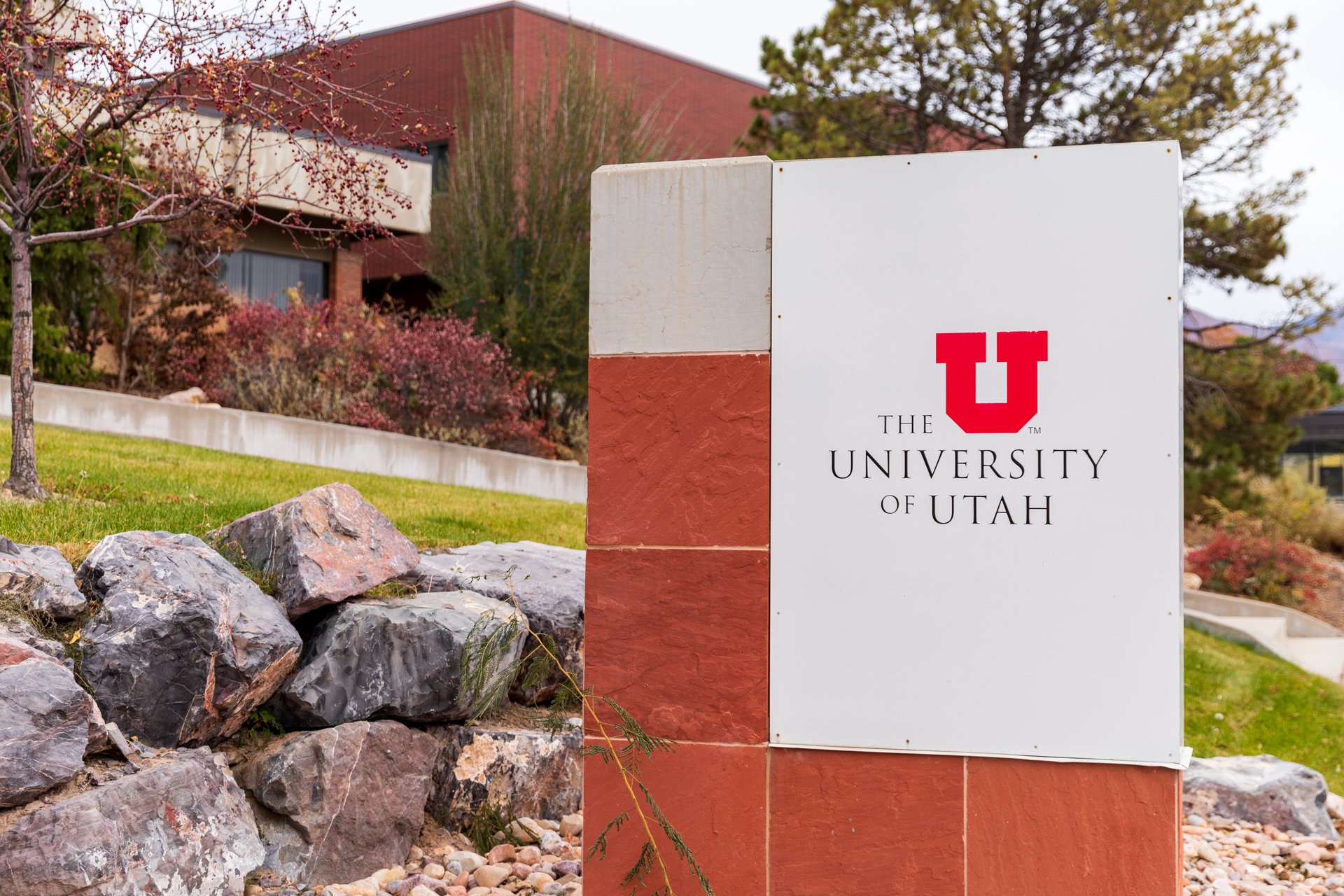Good morning, and thanks for spending part of your day with Extra Points.
Before we get to today’s story, let me share a quick message from today’s sponsor, Teamworks:
Win the Rev Share Era with Teamworks General Manager
Teamworks GM equips athletic departments with the only integrated platform for navigating collegiate revenue sharing. Already adopted by more than 50 programs, Teamworks GM centralizes roster planning, budget forecasting, contract management, and athlete payments. Replace disconnected and generic systems with one intuitive, end-to-end interface. With teams already using the platform to budget for the rev share era, Teamworks GM provides the strategic advantage needed for success in college sports' new financial landscape. Learn more.

Follow along with Teamworks and Extra Points as we explore How GM's are Building Championship Rosters. This series will include an inside look at General Managers in the rev share era, interviews with GMs and player personnel staffers from large programs and small, as well as careful examinations of the software, tools and organizational chart structure used to build rosters in this new era of college athletics. See part one of the series: What skill do you REALLY need to be an effective college football GM?
The calendar will flip to May in a few days. Most of the folks I talked to in the college sports industry expected the final approval of the NCAA’s settlement in House to be approved by this point, allowing coaches, administrators and athletes to feel slightly more secure about how their rosters and budgets would work for the coming academic season.
But as of this second, that settlement is not approved. In fact, last week, Judge Wilken wrote that if the parties do not address her concerns about roster limits, she’d blow up the whole settlement.
To help us all make more sense of what actually just happened, why it happened, and what it means for the industry over the next few weeks, we turn to Special Extra Points Legal Correspondent, Boise State law professor Sam. C. Ehrlich. I’ll turn the time over to him:
The House settlement is not yet finalized, and Judge Claudia Wilken has made clear that one key issue must be fixed before she can grant final approval.
In an April 23 order, Judge Wilken wrote that while most of the class action settlement meets the standard of being “fair, reasonable, and adequate,” one major piece is not: the intended “immediate implementation” of the proposed shift from scholarship limits to roster limits.
Under the settlement, teams could offer more scholarships by limiting total roster sizes—for instance, allowing a women’s soccer team to give out more than 14 scholarships, but capping the team at 28 players. But many teams already exceed those numbers, and athletes and parents have been sounding the alarm for months. With implementation scheduled for July 1, 2025, similar caps across all Division I sports could lead to thousands of athletes being cut.
At the final approval hearing, multiple objectors—including athletes like Utah swimmer Gannon Flynn and high school runner Gracelyn Laudermilch, both of whom have been told they would lose their roster spots—urged Judge Wilken to push the NCAA to soften the blow: phase in limits over time, allow expanded practice squads, or “grandfather” in current players. These arguments clearly resonated with Judge Wilken, who told the defendants that doing something to mitigate at least the immediate effects of the roster limits “would save a lot of goodwill and angst and unhappiness from a lot of students and their parents.”
But the NCAA and conference defendants refused to budge. In a supplemental brief filed a week after the hearing, they said it was too late: schools had already started making cuts in anticipation of approval. Changing course now would cause “significant disruption” by “upset[ing] the settled expectations, enrollment decisions, and other preparations of numerous other student-athletes and member institutions.”
Judge Wilken was not impressed. She called out the NCAA’s decision to begin implementing roster limits before court approval and rejected it as justification for not changing course. As such, efforts to mitigate the harms that would be caused by “immediate implementation” of the roster limits—including harms caused by the “premature implementation of the settlement agreement”—are going to happen if the NCAA wants the settlement passed, whether they like it or not. “Any disruption that may occur,” Judge Wilken wrote, “is a problem of Defendants’ and NCAA members schools’ own making.”
So what has to be done to satisfy Judge Wilken?
The NCAA now has a choice. Their primary path, of course, is to find some way to “grandfather” in the roster limits. Alternatively, they can ditch the settlement and move towards trial, gambling against the potential of a $4 billion damages judgment (which, since this is an antitrust case, would be automatically trebled to $12 billion) by hoping for the favor of an Article III judge who’s already ruled against you twice (O’Bannon and Alston) and is even more unhappy with you now.
With that in mind, I believe it is fairly safe to say that this will get done. The only question is… how.
Figuring out grandfathering will be easy to figure out for athletes who are still enrolled at their current school, cut or not, currently in the transfer portal looking for a new home or not. But Judge Wilken’s order doesn’t just point to the harm imposed on athletes who are still at their original schools. Per Judge Wilken’s order, she sees irreparable harm caused by the settlement’s roster limits for athletes still on rosters but also for athletes “who were on a roster but were removed from the roster in the last several months because of the premature implementation of the settlement agreement.”
To translate: not only does Judge Wilken want grandfathering to make sure that current athletes get to keep their roster spots, but she also presumably wants the NCAA to do something to roll back roster cuts that were based on “the premature implementation of the settlement agreement.”
And that gets messy, given that—as noted above and as the NCAA and conferences argued in the supplemental brief—a lot of athletes have already transferred.
So what happens if athletes who have already transferred now want to come back to their original schools? Does Judge Wilken’s order mean that schools and/or the NCAA have to let athletes transfer back if they’re so inclined? Who knows! Under normal circumstances, no—as Ralph Russo of The Athletic noted, only scholarships are protected under NCAA rules; roster spots are not. Coaches and programs have complete control over their rosters.
But these are not normal circumstances. If Judge Wilken is demanding changes to alleviate not only the harm that would be caused but harm that has already been caused, wouldn’t that require schools to undo any harm caused by “premature implementation of the settlement agreement”? Would Judge Wilken even be willing to accept any agreement that does not extend an olive branch and a mea culpa to the athletes “who were on a roster but were removed from the roster” and subsequently transferred away to continue playing their sport? I have my doubts.
But there’s an even bigger issue here… what about eligibility?
It’s easy to imagine that many schools trimmed down their rosters in anticipation of the new roster limits a while ago. They have been told that the deal would get done as is, and a lot of schools likely felt they were doing their soon-to-be former athletes a favor by telling them that they would be cut early. It’s hard to argue against it! Telling the athletes early would allow them to transfer early before the inevitable portal logjam created when every athlete affected by this entered the portal and all tried to look for new homes at the same time.
This is borne out from evidence. Based on athlete objector letters, cuts began in late Fall 2024 (after Judge Wilken granted preliminary approval) and ramped up considerably as we drew closer to final approval. I imagine a lot of schools waited until after the NCAA made it clear that they weren’t going to consider grandfathering on their own to make cuts, but there were definitely cuts made well before April.
But what happens to the Spring sport athletes who were affected by all of this? These athletes didn’t get the full benefit of their year of eligibility—not even close in some cases. Maybe they were told right before their season was about to start that they would be cut and given the out of transferring. But were they able to find a new school and get situated soon enough to play? Some athletes may have also been told during the season that they would be cut, leaving little to no opportunity to move on, especially given that pesky NCAA Bylaw 14.5.5.2 (the “Competition in Year of Transfer” Rule, which forbids players from playing for two schools in one academic year). Maybe these athletes were permitted to finish out the season—the schools certainly could afford them this opportunity—but maybe they weren’t.
This all may sound a little farfetched or hypothetical. However, frequent Extra Points readers may already be remembering the last time I had the privilege of writing for this esteemed publication: when I wrote about the case of ex-Oklahoma, now-USF golfer Holly McLean. To refresh your memory, McLean and some of her Oklahoma teammates were told by their coaches back in November 2024 that they would be cut if and when the roster limits took effect. McLean’s coaches (very reasonably and justifiably) did what I mentioned before: they told McLean and her teammates early so they can transfer early and avoid the inevitable glut that the portal would become once every team started to make their cuts.
McLean took the out and transferred to South Florida. But when she wanted to play in the Spring 2025 season for the Bulls, she was told no by the NCAA, as she had played in a non-championship tournament for Oklahoma in October 2024, triggering NCAA Bylaw 14.5.5.2. She filed a lawsuit seeking judicial intervention but voluntarily dismissed the suit just two weeks later for unstated reasons. At least from what I can tell from USF’s season statistics, McLean never golfed for USF in any Spring 2025 event, so the NCAA clearly didn’t reverse course on Bylaw 14.5.5.2—and I can be at least fairly confident that the NCAA didn’t voluntarily extend her an extra year of eligibility to make up for it.
McLean isn’t alone here. Among the flurry of over 120 letters submitted to Judge Wilken after the parties informed the court they would not voluntarily institute roster limit grandfathering was a letter from Kennesaw State baseball player Corey Berry II. Per this letter, Berry was informed by a coach in early April that he would be cut when the roster limits took effect. Berry was then asked by his coach whether he planned to transfer, and Berry said yes. In response, the coach told Berry that he “did not need to come to practice or travel” and took away Berry’s access to athletic department facilities, including meals and trainers. Berry had played in just two games at the time, losing the last seven weeks of the season.
Maybe McLean and Berry are the only athletes in an equivalent or similar situation. I doubt it. Regardless, their situations lead to a critical question: Does the NCAA have to give prematurely-cut athletes their year of eligibility back?
You have to expect that the NCAA will resist this. They’ve already expressed concern that too many waivers and eligibility extensions could crowd out incoming high school athletes. And they’re already facing lawsuits over their inconsistent waiver process (see Fourqurean v. NCAA—a decision that has already been cited in several copycat cases). Granting yet another blanket waiver could deepen their legal exposure.
But will they have a choice? Again, Judge Wilken is essentially requiring the NCAA and defendant conferences to essentially roll back the harm caused by their “premature implementation of the settlement agreement.” That order should certainly extend to players losing eligibility due to premature cuts—that’s pretty darn harmful!
Of course, it wouldn’t surprise me if neither Judge Wilken nor the objectors’ lawyers that she tasked with “babysitting” the parties on this issue have realized this issue, so maybe it doesn’t standing the way of final approval next week.
But Judge Wilken may not be the only judge who ends up facing this question.
Considering the blizzard of eligibility litigation that has already been filed since Diego Pavia won an extra year back in December—a blizzard that includes Rutgers football’s Jett Elad getting an injunction on Friday that gives him a seventh year in college football—I would be fairly shocked if there wasn’t a lawsuit over this.
Heck, Holly McLean dismissed her lawsuit without prejudice, meaning that she could refile her suit if she were so inclined.
And even if antitrust is not the correct avenue here—most of the players impacted by roster limits would likely not have the same claims to economic harm required in antitrust cases as Pavia, Fourqurean, and Elad—it would not be hard to theory-craft other potential legal claims. The creativity of lawyers suing the NCAA these days seems to be unlimited.
Ultimately, all of these legal threads circle back to one core issue: the NCAA’s refusal proactively consider the immediate implementation of roster limits an issue and respond to concerns about then. That decision created a cascade of problems—lost roster spots, disrupted seasons, and uncertain eligibility. Judge Wilken has now made clear that if the NCAA wants her approval, it must take real, measurable steps to undo some of that damage. The only question remaining is how far she’s willing to go in requiring those corrective steps.

















